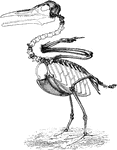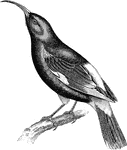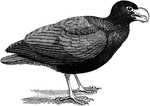Clipart tagged: ‘medium birds’

Skeleton Head of a Ichthyornis
"Ichthyornis victor and I. dispar, ...were small forms of about the size of a Partridge, with the habits…

Restoration of Ichthyornis
"Ichthyornis, though the wings are well developed, with fused metacarpals, and the sternum is keeled,…

Mamo
"Drepanis pacifica, the Mamo, is black, with golden rump, upper and under tail-coverts, tibiae, and…

Tooth-Billed Pigeon
Didunculus strigirostris, the Manu-mea or Red Bird of the islands of Upolu, Salvai, and Tutuila in Samoan…

Sugarbird
"Certhiola flaveola, the Sugar-bird, coloration varies from black, grey, or purplish, relieved by rufous…